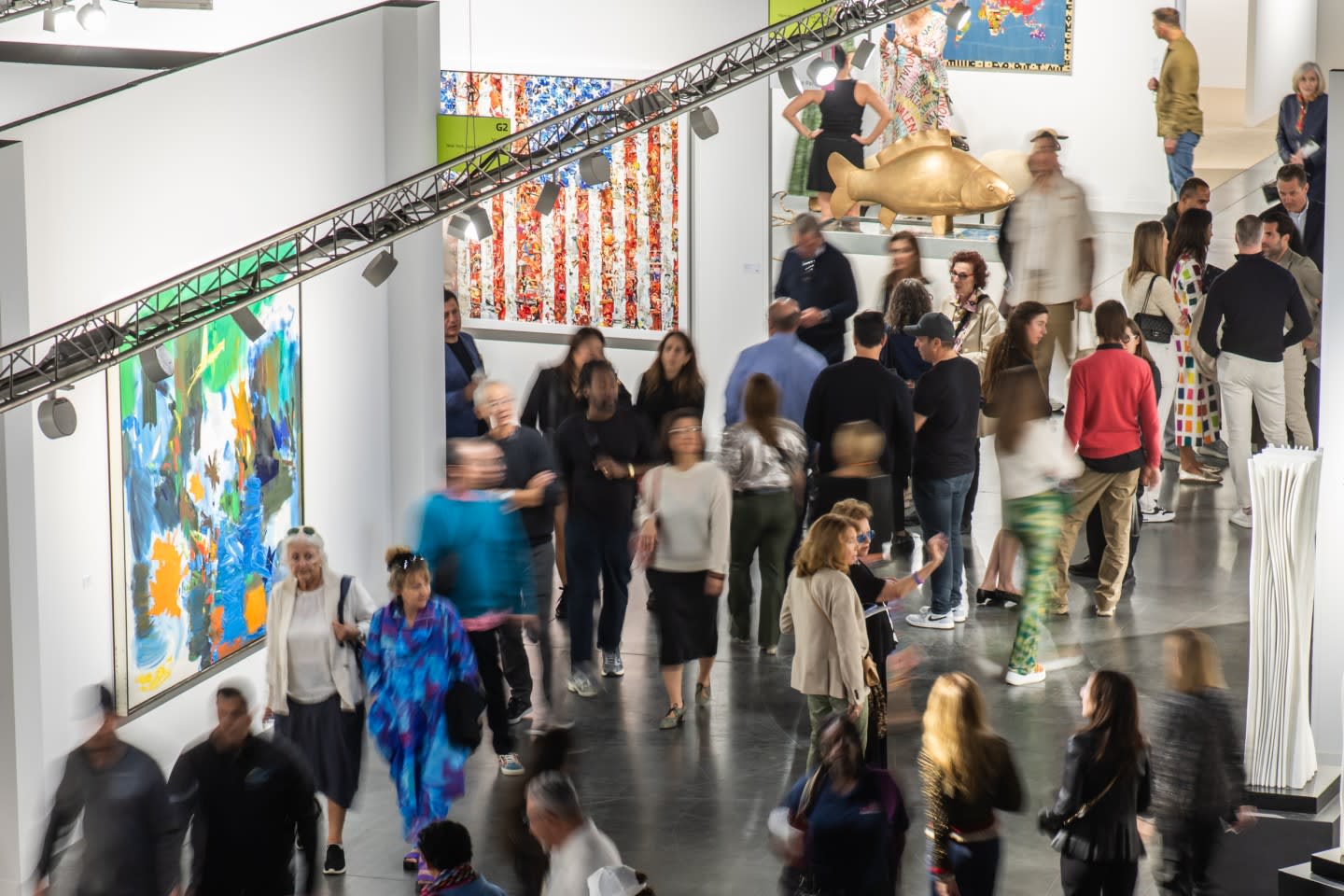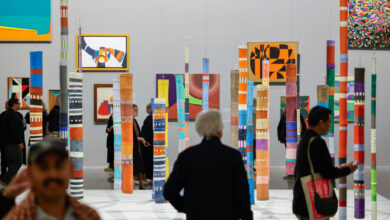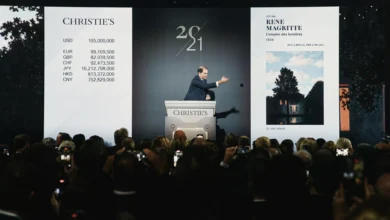A Benchmark for
the Global Art Scene
Art Basel Miami Beach has long served as a barometer for the art market’s vitality and a showcase for the breadth of contemporary artistic production. In its 2024 iteration, the fair reaffirmed its stature as the premier art event in the Americas. Featuring 286 galleries from 38 countries, it offered an expansive view of modern and contemporary art, interweaving established masterpieces with fresh, provocative voices. Yet beneath the glittering sales and celebrity appearances lies a deeper story, one of artistic critique, societal reflection, and the evolving role of art fairs in shaping cultural dialogues.
Pushing Boundaries
Through Artistic Narratives
At the heart of Art Basel Miami Beach 2024 lies a profound tension: the juxtaposition of market-driven spectacle and the artists’ pursuit of deeper truths. The fair’s Meridians sector, now celebrating its fifth year, exemplifies this duality. Curated by Yasmil Raymond, the section featured 17 large-scale works that challenged traditional notions of space and interaction. Rachel Feinstein’s theatrical installations, for instance, blurred the line between the fantastical and the grotesque, evoking both awe and discomfort in viewers. Similarly, Alice Aycock’s intricate sculptures, inspired by natural phenomena, demanded contemplation on humanity’s fraught relationship with nature.
One standout in the Meridians sector was Leonardo Drew’s expansive wall-mounted piece. Made from found objects, Drew’s work speaks to themes of decay and renewal, creating a poignant dialogue about impermanence in a world obsessed with permanence. These large-scale works push the boundaries of what an art fair can offer, transforming commercial spaces into arenas for intellectual and emotional engagement.
The Market as
a Stage for Provocation

Art Basel Miami Beach 2024, Courtesy of Art Basel.
While sales often dominate headlines, the fair’s most compelling moments emerged in the subtle critiques embedded within the artworks themselves. Keith Haring’s Untitled (1984), sold by Gladstone Gallery for $2 million, served as a pointed reminder of the sociopolitical battles of the 1980s that remain relevant today. Haring’s iconic figures, rendered with energetic precision, appear both celebratory and mournful, echoing the struggles for visibility and equity.
In contrast, Yayoi Kusama’s Infinite Nets, sold by David Zwirner for $3.5 million, offered a quieter but equally potent reflection. Kusama’s repetitive, meditative patterns challenge the viewer to consider themes of obsession, infinity, and the artist’s own psychological landscape. This delicate interplay between the deeply personal and the universally accessible is where Kusama’s genius resides.
David Hammons’ Untitled (2014), sold for $4.75 million by Hauser & Wirth, encapsulated the fair’s ability to bridge cultural critique and market success. Hammons, known for his sharp social commentary, offers works that resist commodification even as they achieve staggering auction results. The piece, austere and enigmatic, seemed to mock its own price tag, daring viewers to confront the uneasy marriage of art and commerce.
Emerging Voices
and Fresh Perspectives
While established names commanded the spotlight, the fair also carved space for emerging artists who brought fresh energy and perspectives. Anastasia Bay’s bold tapestries and Ishi Glinsky’s intricate sculptures explored identity and tradition with a modern twist, reminding audiences that contemporary art thrives on diversity and dialogue. These works added depth to the fair, ensuring it was not merely a celebration of the past but a platform for the future.
A Reflection
of the Cultural Zeitgeist
Art Basel Miami Beach 2024 succeeded in mirroring the cultural and social complexities of our time. The artworks on display, from the grandiose to the intimate, engaged with pressing issues such as climate change, inequality, and the enduring search for identity. The fair itself, with its opulent settings and high-profile clientele, became part of the narrative—a microcosm of the contradictions it seeks to explore.
While some critics argue that art fairs inherently prioritize commerce over culture, this year’s edition of Art Basel Miami Beach demonstrated that the two need not be mutually exclusive. By creating spaces for both high-stakes transactions and meaningful artistic encounters, the fair reaffirmed its role as a crucible for contemporary art’s most urgent questions.

Art Basel Miami Beach 2024, Courtesy of Art Basel.
Conclusion
Art Basel Miami Beach 2024 was not just a commercial success but a critical one, offering a platform where art’s market-driven nature coexists with its capacity to provoke, inspire, and challenge. From the large-scale provocations of Meridians to the quiet introspection of Kusama and Hammons, the fair highlighted the multifaceted role of art in reflecting and shaping the human experience. As the art world looks to the future, events like this remind us that art’s true power lies in its ability to ask difficult questions, even amid the glitter of high-profile sales.




